


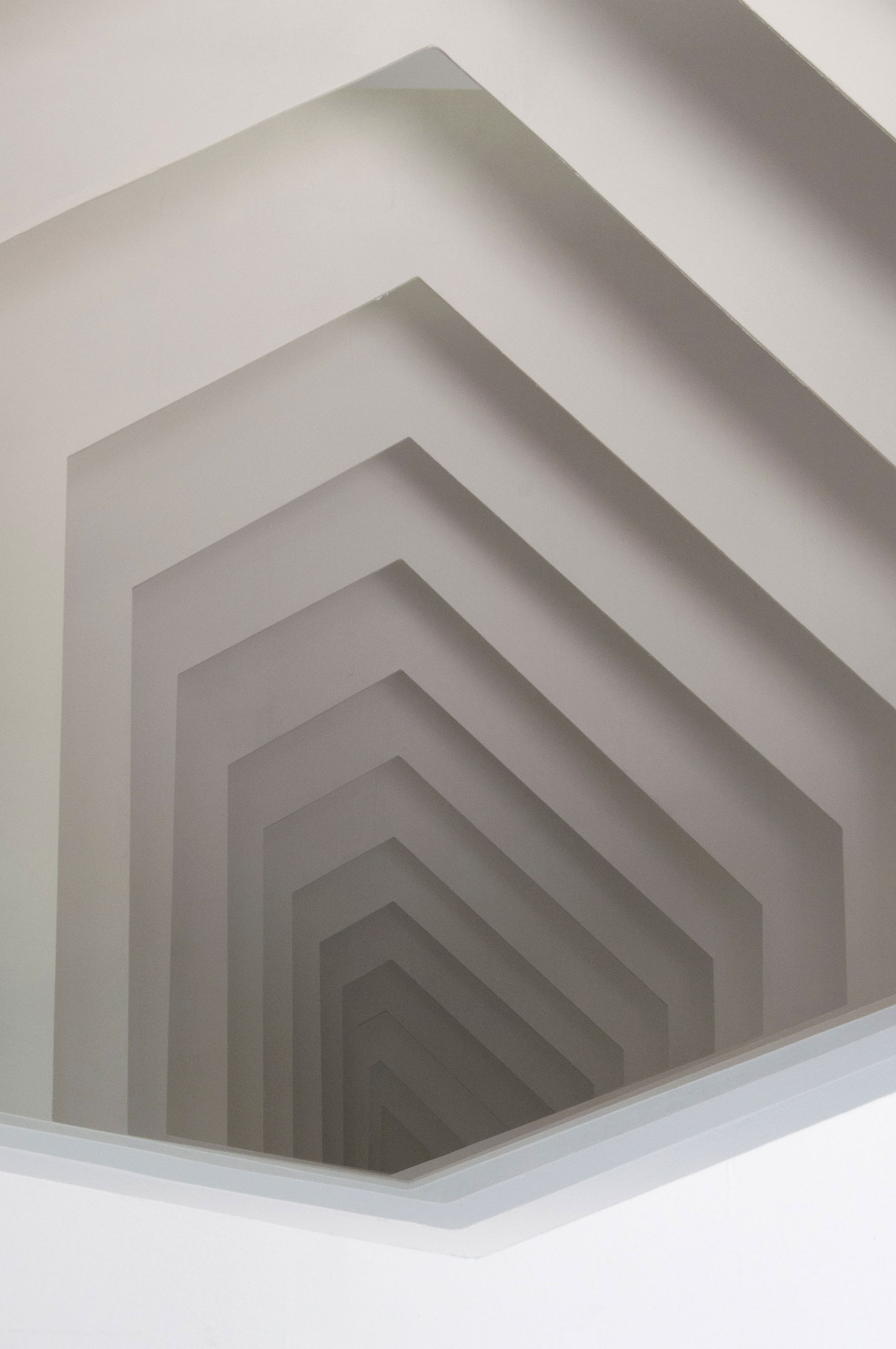
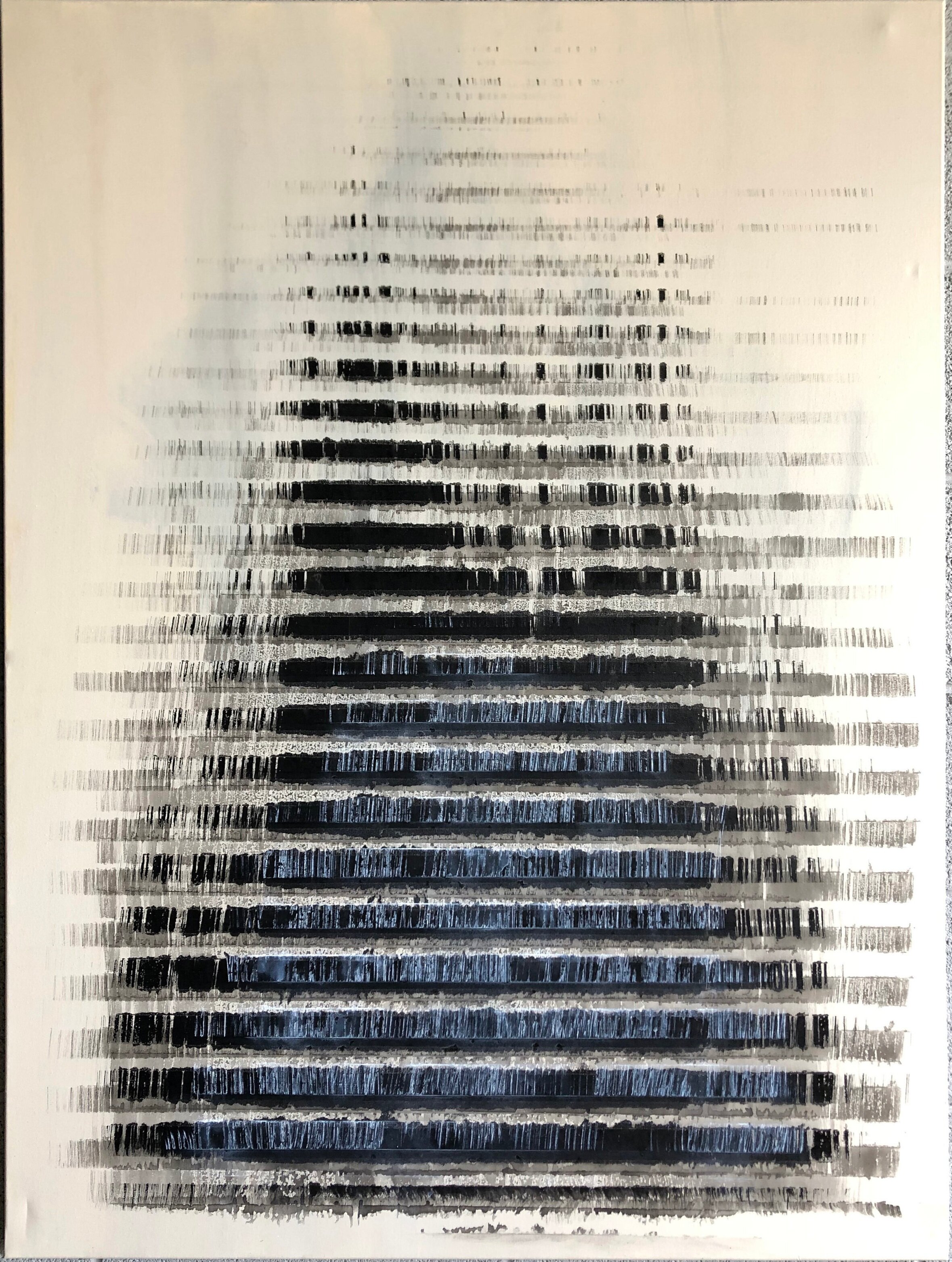
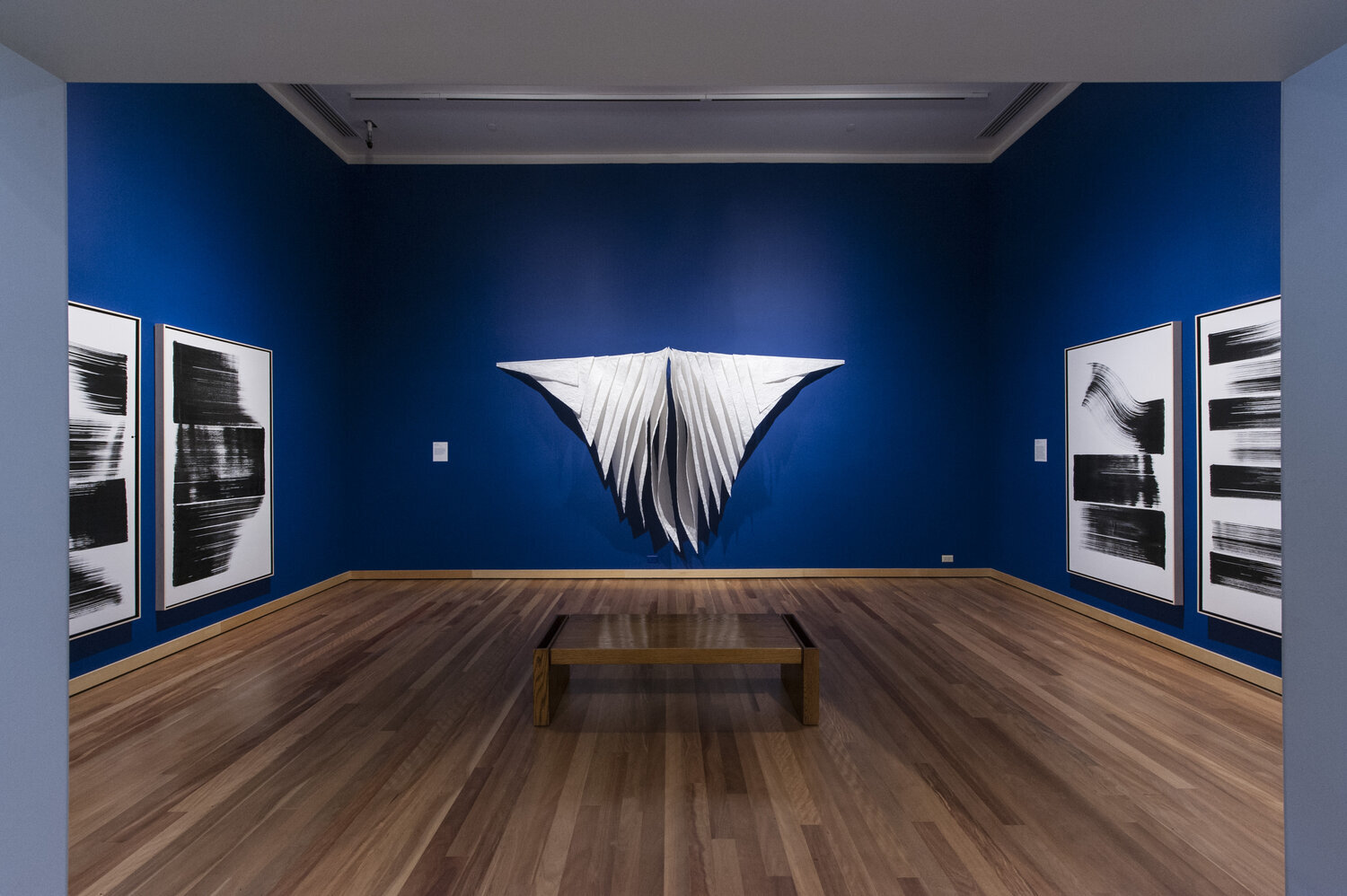
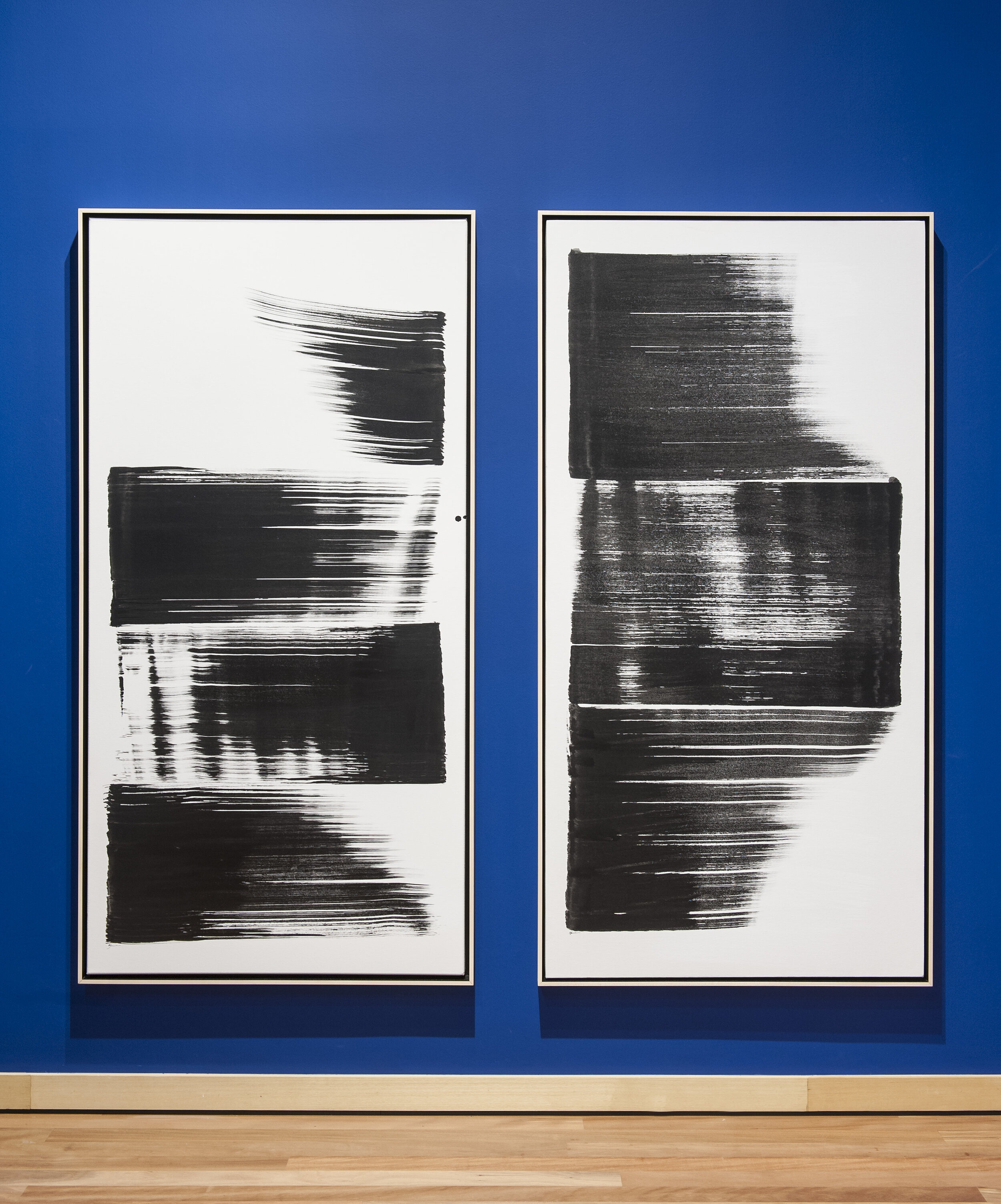

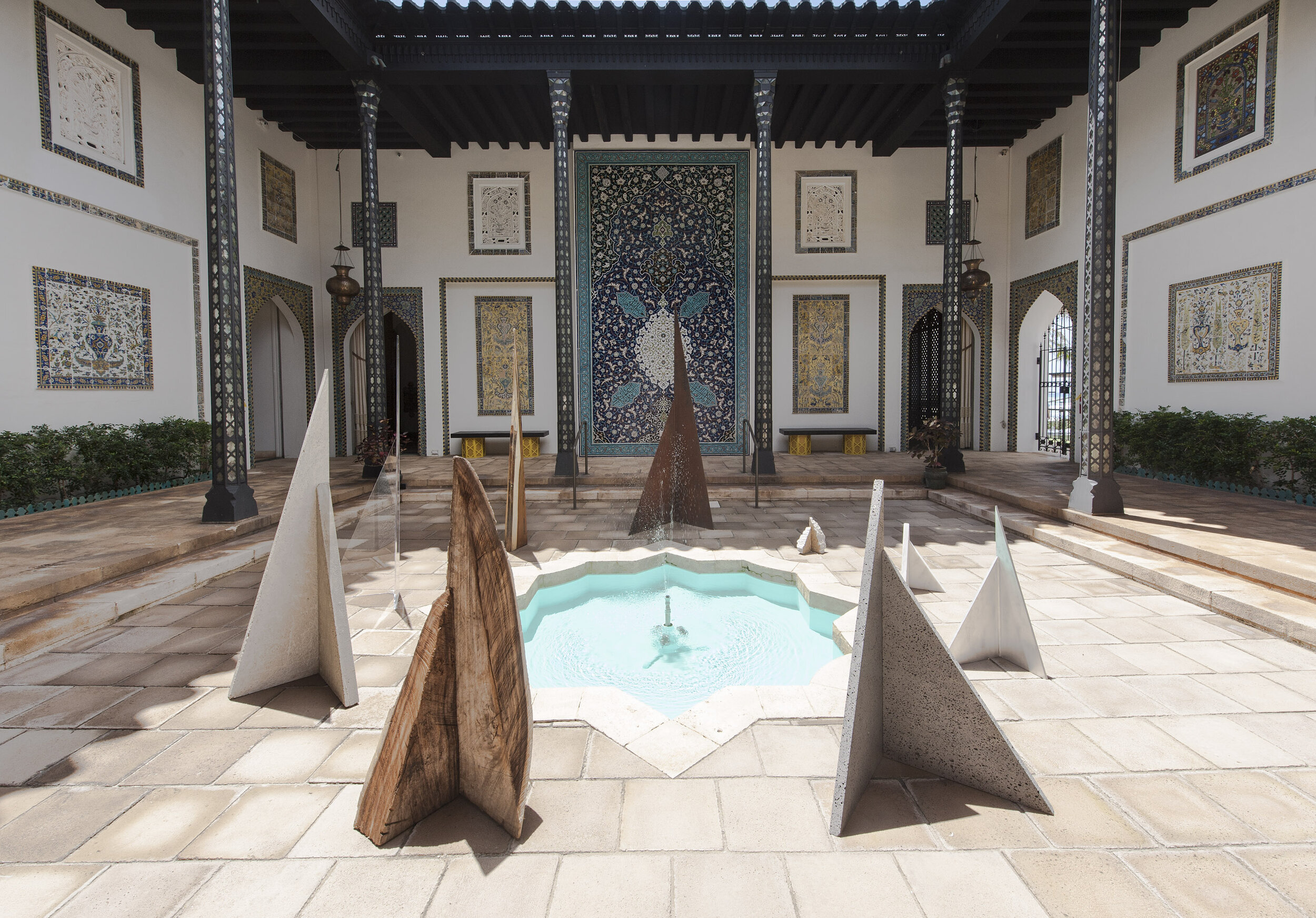
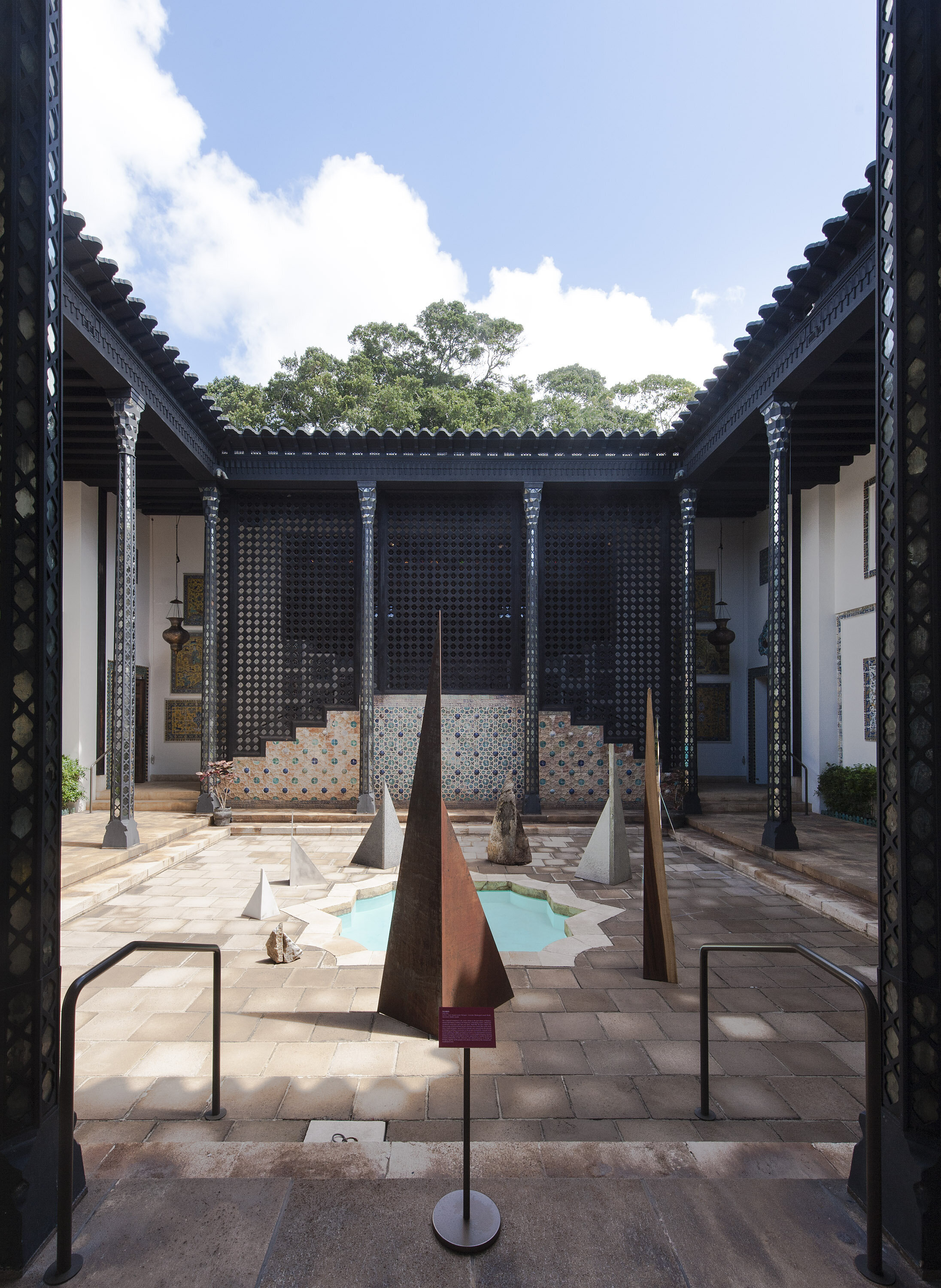
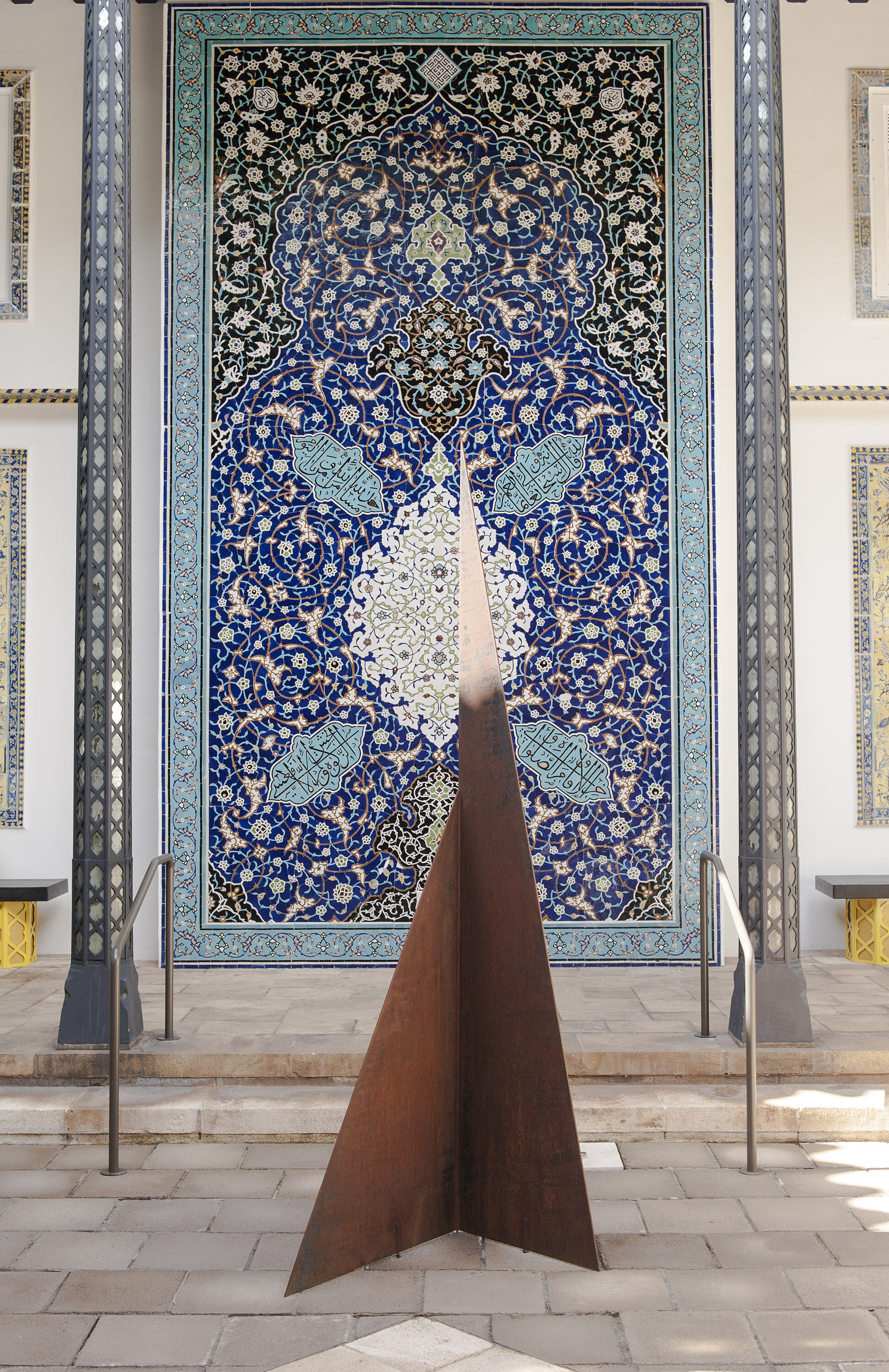

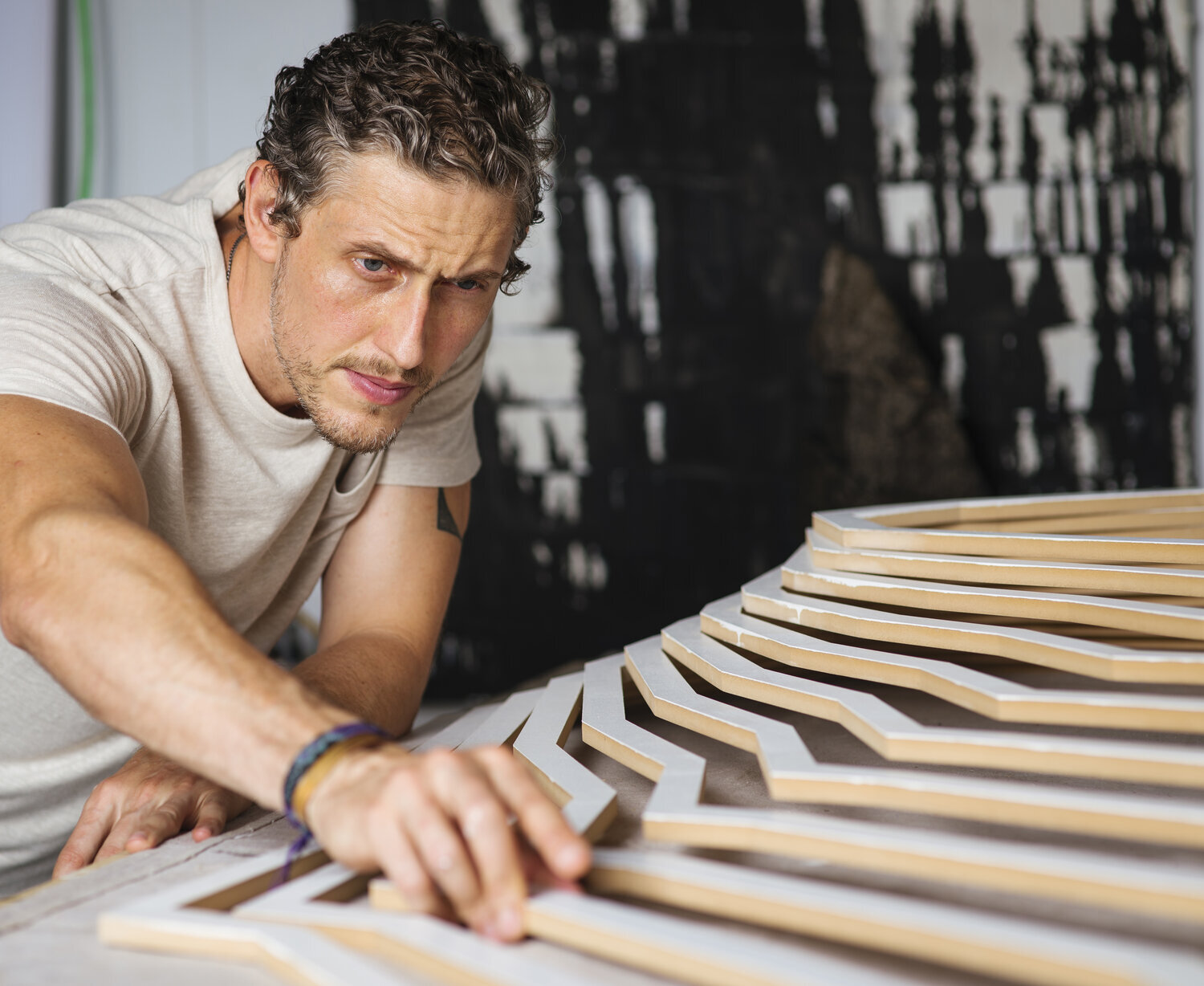

Plexiglass, LED strips, 60"x84"x98".
Exhibition History: The Gallery at the University of Hawaii, 2016.

2021, Sumi ink, watercolor, acrylic on canvas, 36”x 48”.
This painting is part of the series, Traces of the Traceless, which was borne from meditations on mortality, existence, and the artist’s desire to find a place of peace which exists beyond the physical world. Together, these artworks explore the artist’s belief that the path to enlightenment can be both dense and complex, and straightforward and simple. These works were influenced by the following quote by Rumi:
“My place is the Placeless, my trace is the Traceless ; 'Tis neither body nor soul, for I belong to the soul of the Beloved. I have put duality away, I have seen that the two worlds are one; One I seek, One I know, One I see, One I call. ”
This painting carries countless layered brushstrokes of white and grey ink, each compounding and building upon one another. Beneath the ink, horizontal sections of the canvas below were masked off, then revealed once the ink dried. These engagements with the surface appear to hum and vibrate, extending off the canvas and into three-dimensional space.

In Stillness is the first of two exhibitions which arose from a 14-month artistic residency at the Shangri La Museum of Islamic Art, Culture & Design. The second exhibition, entitled Sanctuaries, is installed at the Shangri La Museum of Islamic Art, Culture & Design.
In Stillness explores instances of change, transformation, and the passage of time. Paying tribute to that which is felt but imperceptible, each of these artistic visualizations highlight transitions from one state to another. Through the careful manipulation of line, form, object, and light, a silent dynamism reverberates through the space, emphasizing how spatial intervals are opportunities for contemplation and reflection.
These artworks silently present the question: What may happen in and during apparent emptiness? The artist explores how in-between spaces are full of meaning, expanses of hidden possibility, and moments to see connections between things. By coaxing materiality from the unseen, the artist performs an act of spiritual practice.
Image is courtesy of Doris Duke Foundation for Islamic Art, Shangri La Museum, Honolulu, Hawai‘i and Honolulu Art Museum, Hawai‘i and © 2020 Doris Duke Foundation for Islamic Art, photographer: David Franzen

India Ink, Acrylic on Canvas, Framed, 38” x 74”.
As a metaphor for the way we move through life, this body of work embraces and celebrates the fleeting nature of existence with an interconnected past, present, and future. The marks on each canvas are affirmations of existence, as well as manifestations of the artist’s reflections on memory and the passage of time.
Each mark on these paintings transitions between presence and absence, a journey of brushstrokes, and an exercise in continually embracing and letting-go of each moment. This meditation on transition presents a non-dualistic approach: emphasizing neither black nor white, but rather the transition between the two.
Synchronized with a single breath, an inked brush glides across the surface of the canvas, an act of release. The overall pattern repeats, each painting vibrating and reverberating: visual expressions of prayer.
Image is courtesy of Doris Duke Foundation for Islamic Art, Shangri La Museum, Honolulu, Hawai‘i and © 2020 Doris Duke Foundation for Islamic Art, photographer: David Franzen


Kamran Samimi, Ascendants, 2020-21, Installation, CorTen™ Steel, Earpod wood, Plexiglas®, Concrete, Monkeypod wood, Basalt, Aluminium, Marble, Granite, 177” x180”x108” (450x 458 x 275cm), Shangri La Museum of Islamic Art, Culture & Design.
Kamran Samimi describes:
“This sculptural installation is a tribute to the generations of thinkers, artisans, and laborers from which I descend. It features nine sculptures, each composed of two joined triangles, a simple architectural form which connotes stability but also timelessness.
It is a monument that embodies creative, cultural and vocational connections over time and space, paying tribute not only to my Iranian and Norwegian ancestors, but those from past millennia from which all humankind descends.
Materially, the work features the diverse range of elements that our species has used to build and create, both in ancient and modern times: wood, stone, metal and plastic. While these specific materials originated all over the world, several of them were discovered on the grounds at Shangri La, further connecting the installation to the site it occupies.”
This artwork is part of Sanctuaries, a site-specific installation at the Shangri La Museum of Islamic Art, Culture & Design.
Image is courtesy of Doris Duke Foundation for Islamic Art, Shangri La Museum, Honolulu, Hawai‘i and © 2021 Doris Duke Foundation for Islamic Art, photographer: David Franzen

Kamran Samimi, Ascendants, Installation detail, Shangri La Museum.
Image is Courtesy of Doris Duke Foundation for Islamic Art, Shangri La Museum, Honolulu, Hawai‘i and © 2021 Doris Duke Foundation for Islamic Art, photographer: David Franzen.

Kamran Samimi, Ascendants, Installation detail, Shangri La Museum.
Image is courtesy of Doris Duke Foundation for Islamic Art, Shangri La Museum, Honolulu, Hawai‘i and © 2021 Doris Duke Foundation for Islamic Art, photographer: David Franzen.

Kamran Samimi, Ascendants, Installation detail, Shangri La Museum.
Image is courtesy of Doris Duke Foundation for Islamic Art, Shangri La Museum, Honolulu, Hawai‘i and © 2021 Doris Duke Foundation for Islamic Art, photographer: David Franzen

ABOUT THE ARTIST
Informed by a strong sense of place and his multi-cultural identity (Iranian/Norwegian raised in rural Hawai'i), Kamran Samimi's artistic practice centers on natural and indigenous ephemera —stones, wood, pigment, and land—as conduits to explore the intricate dynamics, tensions, and histories that exist between human and non-human ancestors.
Samimi contemplates the ways in which these interconnected relationships might engender moments of equilibrium, compassion and healing in a world marked by oppression, injustice, and widespread devastation. Specifically, Samimi draws inspiration from the direct, experiential focus on Nature also found in Zen Buddhism and Sufi Mysticism. As a testament to these philosophies, as well as a formal artistic proposition, his approach is both reverent and whimsical, mirroring Nature's gestures: deconstructing and reforming with intention and compassion.
BIO
Kamran Samimi grew up in rural Laupāhoehoe on Hawai’i Island to parents of Iranian and Norwegian ancestry. He has been exhibiting art since 2008, and has had solo exhibitions at The Third Line, Dubai, the Sharjah Art Museum in United Arab Emirates, the Honolulu Museum of Art, and the Shangri La Museum of Islamic Art, Culture & Design. He has also shown at The Andy Warhol Museum in Pittsburg, PA, and Tokyo Midtown in Tokyo, Japan, and many other venues around the globe. Samimi was the recipient of the 2024 Artists of Hawai’i Best in Show Award and holds an BFA in Printmaking and an MFA in Print Media and Sculpture from the University of Hawai’i at Mānoa.
“Our ancestors had a direct relationship with the natural world, knew a life indivisible from the rain, the sea, the wind, the stones. Through my marks and gestures, I honor their sacrifices and stories, and weave their layered histories with my own. In this fleeting world, I seek solace in The Ineffable -- finding within Nature that which unites and endures.” – Kamran Samimi
For more information on Samimi, click here.
Photo credit: IJfke Ridgley